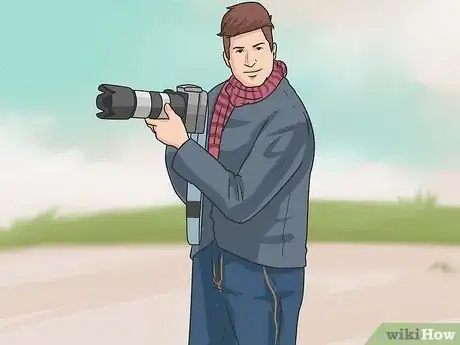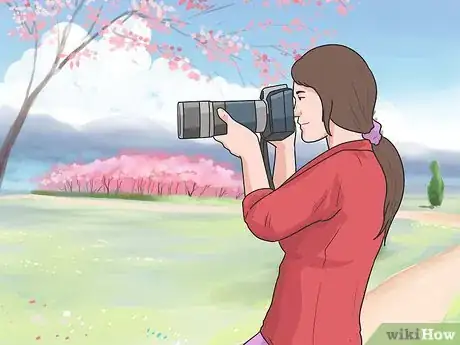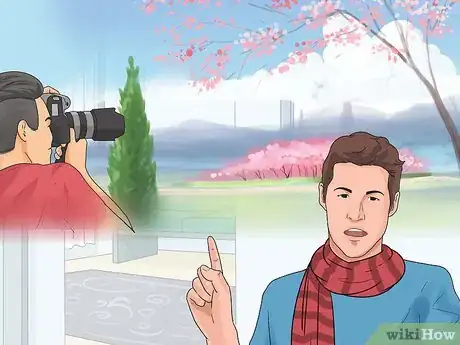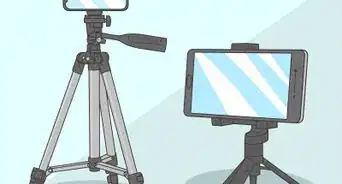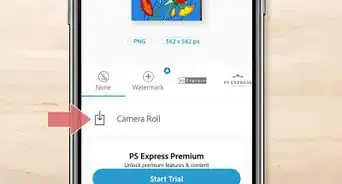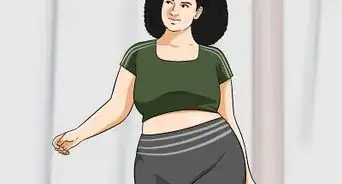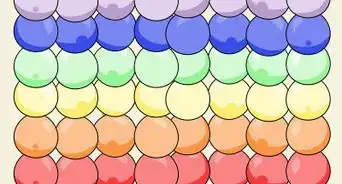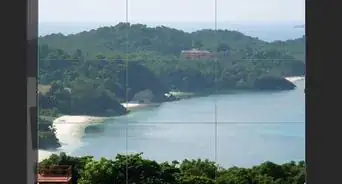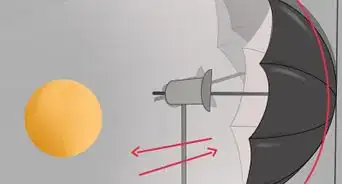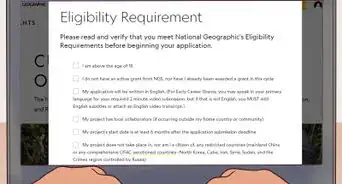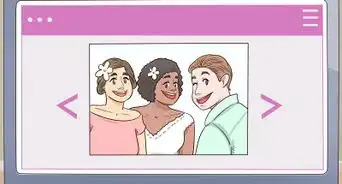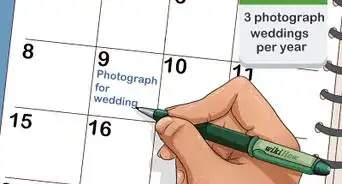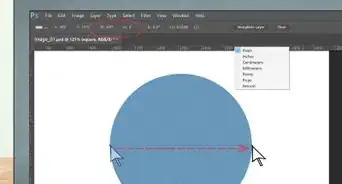This article was co-authored by David Zhang. David Zhang is a Professional Wedding Photographer and the Co-Owner of A Tale Ahead based in the San Francisco Bay Area. He works with his wife Annie to capture their clients’ happiest memories in life, from surprise proposals to wedding days and beyond. David and Annie are experts at capturing moments and emotions naturally and candidly, beautifully and artistically.
wikiHow marks an article as reader-approved once it receives enough positive feedback. This article received 13 testimonials and 100% of readers who voted found it helpful, earning it our reader-approved status.
This article has been viewed 534,396 times.
Photography is an amazing art. It can be a passion, profession or leisure activity. If you've mastered the basics of framing, shooting, and taking a photograph, try taking it further. Make it a hobby, or maybe even a career, rather than taking only the usual holiday, pet, and kid snapshots. It is time to start making stunning, rather than simply passable, photographs. Follow the described journey to develop your photography skills.
Steps
-
1Find someone who can help you buy a good usable camera. Maybe your dad or a photographer friend has a redundant film SLR kicking around. If you don't have a camera, borrow one until you can buy one. Nearly any digital camera from the last decade, and nearly any film camera ever made, will be good enough to get you great shots. Having your camera will be an immense help.
-
2Learn the basics if you haven't already. Basics of photography include composition, which is essentially the placing of a subject within the frame of a photograph, lighting, and the basic workings of your camera. See How to Take Better Photographs for some introductory material.[1]Advertisement
-
3Be ready. At least half of the time, the difference between a great photograph and a mediocre one is being in the right place at the right time, with a camera in your hand. Carry your camera with you as often as you can. Make sure to use your camera often, too. Just carrying it around does no good.[2]
-
4Be there. Being "ready" is not enough. As Ken Rockwell says of his early experience, Did you catch the spoiler word in my logic, "anything that presented itself?" I was a spectator. I thought that photography involved taking pictures of things that came along. No! You have to get out there and find things. Finding and seeing are the hard part...taking a picture of what you find is the trivial part.[3]
- get up, get out there and take photographs. Go out at every time of day, every day, and look for things. Don't wait for the right opportunity to come along (but be prepared if it does!); go out and find them. Look for opportunities everywhere you go (whether you're at the mall or on the other side of the world), and go to places to look for opportunities. If you can see something in your mind, chances are you can set it up and shoot it![4]
-
5Stop looking for subjects to photograph and learn to see.
- Look for colors. Or do the opposite: look for a total absence of color, or shoot in black-and-white.
- Look for repetition and rhythm. Or do the opposite, and look for something completely isolated from the things around it.
- Look for lighting, and the lack of such. Take photographs of shadows, or reflections, or light streaming through something, or of things in total darkness. Many people find 'golden hour' (last two hours of daylight) to be the ideal light conditions for photographs. This is due to the directional light it creates, which can create depth in a photo when utilized properly. However, that doesn't mean one can't photograph during mid-day and still find good light. Sun directly overhead can be viewed as harsh, look for foggy conditions or open shade to find nice soft light. But, rules are made to be broken, don't take these guidelines too literally![5]
- Look for emotion and gesture if you're photographing people. Do they show happiness? Mischievousness? Sadness? Do they look thoughtful? Or do they just look like another person mildly annoyed to have a camera pointed at them?
- Look for texture, forms, and patterns. Great black-and-white photographs are stunning because black-and-white forces the photographer to look for these things.
- Look for contrasts. Look for something that stands out from the rest of the shot. In your composition, use the wide end of your zoom (or a wide-angle lens) and get closer and make it so. Look for contrasts of all the things above: color amid dullness, light among the darkness, and so on. If you're photographing people, try putting (or finding) your subject in a context in which they stand out. Look for happiness in unexpected places. Look for a person in a surrounding in which they appear out-of-place. Or ignore this and take them completely away from their context by opening your lens all the way to blur the background. In short...
- Look for anything that will hold a viewer's interest which isn't a traditional "subject". As you find your niche, you'll probably find that you end up going back to taking photographs of subjects again. This is fine. Looking for things which aren't subjects will improve your photography no end—you'll soon see a different world altogether.
-
6Keep your photos as simple as possible. Get as close to your subject as you can. Use your feet, and use your zoom lens (if you have one) to fine-tune your composition. Get rid of anything that doesn't give some important context to understand your photo fully.
-
7Shoot film. If you already shoot film, then shoot digital as well. Both film and digital cameras have their place in the learning photographer's arsenal. They both have their advantages and disadvantages, and both will teach you a different set of habits. The worst habits of digital, are balanced out by the better habits of film, and vice versa.
- Digital cameras give you immediate feedback on what you are doing right and what you are doing wrong. They also reduce the cost of experimentation to zero. Both of these things are invaluable to the new photographer. However, the zero cost of digital makes it far too easy to fall into the habit of "spraying-and-praying" and hoping a good photo comes out at the end of it.[6]
- Film cameras force you to be more careful about what you are taking. Even a millionaire would be reluctant to sit around on his yacht taking thirty-six photographs of his bathing towel on film.[7] The economic incentive to make more of the shots you take might lead to less experimentation (which is bad), but it does make you think harder before taking photographs (which can be good, if you have a good idea of what you should do before taking the picture). What's more, the film still has a look all its own, and you can pick up professional-quality film gear ludicrously cheap as well.
-
8Show the best of your work to other people. Which is to say, find the best of your work and show only that to other people. Even the greatest photographers don't take superb shots every single time; they're just very selective about what they show to others.
- Be brutal about it. If they're not great shots to you, then never show them. Your standards will increase over time, and even the ones you might have once thought were passable will probably look pretty lame to you a few months down the line. If this means that all you had for a day's worth of shooting was one or two photos, then that's okay. It probably means you're being just harsh enough.
- Don't look at images full size. Ken points out that the most important parts of an image are those that can be seen when the picture is seen at thumbnail size. There are people out there who will pick at flaws they can only see in 100% crops of your photos. That's okay because they aren't worth listening to. Feel free to pass over anything that doesn't look great when it takes up a quarter of your screen (or less).
-
9Seek out and listen to the critiques of others. Don't fall into the trap of posting in "critique my photos"-type threads on the Internet; these are usually full of the pixel-peepers mentioned above. Still, it's good to seek out constructive criticism, as long as you're careful about who you listen to.[8]
- Listen to artists. If someone has some great art work to show— photos, paintings, music, or anything else—then this is reason to take them seriously since other artists instinctively understand the visceral impact, whether it's in their field or not (and if your photo doesn't make an impact, it's probably better deleted). Most non-artists do, as well, although they aren't as well positioned to tell you what you're doing right (and they're more likely to be nice to you to avoid hurting your feelings).
- Ignore anyone who critiques your photos harshly and has no stunning photography to show. Their opinions are simply not worth listening to.
- Figure out what you're doing right and what you're doing wrong. If someone liked a photograph, what made them like it? If they didn't, what did you do wrong? As said above, other artists will probably be able to tell you these things.
- Don't be modest if someone likes your work. It's okay, photographers love being complimented on their masterpieces as much as anyone else does. Try not to be cocky, though.
-
10Look for work that inspires you. This doesn't mean merely technically impeccable; any (very rich) clown can stick a 400mm f/2.8 lens onto a $3000 digital SLR, get a well-exposed, super-sharp photograph of a bird, and that still won't make them Steve Cirone. Rather, look for work that makes you smile, laugh, cry, or feel anything, and not work that makes you think "well exposed and focused". If you're into people photos, look at the work of Steve McCurry (photographer of the Afghan Girl), or the studio work of Annie Leibowitz.
If you're on Flickr or any other photo-sharing website, then keep an eye on the people who inspire you (though don't end up spending so much time at your computer that you're not out taking photos).[9] -
11Learn some technical trivia. No, this is not the most important part of taking photographs. It's one of the least important, which is why it's down here; a great photo taken by a point-and-shooter ignorant of these things, is far more interesting than a boring photo perfectly focused and exposed. It's also infinitely better than the one that wasn't taken at all because someone was too busy worrying about this sort of trivia.[10]
- Still, it's handy to have a working knowledge of shutter speed, aperture, focal length, etc., and what effects they will have on your picture. None of this will make a bad photo into a good one, but it can sometimes keep you from losing a good photo to a technical problem and can make great photos even better.
-
12Find your niche. You may find that you're a good enough communicator to photograph people. You may find that you enjoy being out in all weathers enough that you can do landscape photography. You might have huge telephoto lenses and enjoy motor racing enough that you find yourself having fun photographing them. Try all these things! Find something that you enjoy, and that you're good at, but don't limit yourself to it.
-
13Organize program and be social.
- You can be social by opening an account on Instagram, Twitter, Facebook, or other social sites. You may join Getty images.
- You can organize an exhibition for your vicinity.
Expert Q&A
-
QuestionHow can I learn to take more interesting photographs?
 David ZhangDavid Zhang is a Professional Wedding Photographer and the Co-Owner of A Tale Ahead based in the San Francisco Bay Area. He works with his wife Annie to capture their clients’ happiest memories in life, from surprise proposals to wedding days and beyond. David and Annie are experts at capturing moments and emotions naturally and candidly, beautifully and artistically.
David ZhangDavid Zhang is a Professional Wedding Photographer and the Co-Owner of A Tale Ahead based in the San Francisco Bay Area. He works with his wife Annie to capture their clients’ happiest memories in life, from surprise proposals to wedding days and beyond. David and Annie are experts at capturing moments and emotions naturally and candidly, beautifully and artistically.
Professional Photographer One of the most important things you need to do is take a reading on the location and its light. Photography is all about tracking light and processing the relationship between your location and the subject to create elegant compositions. If you can learn how to pay attention to those two things, you can teach yourself how to take great photos!
One of the most important things you need to do is take a reading on the location and its light. Photography is all about tracking light and processing the relationship between your location and the subject to create elegant compositions. If you can learn how to pay attention to those two things, you can teach yourself how to take great photos! -
QuestionIs photography a skill or a talent?
 David ZhangDavid Zhang is a Professional Wedding Photographer and the Co-Owner of A Tale Ahead based in the San Francisco Bay Area. He works with his wife Annie to capture their clients’ happiest memories in life, from surprise proposals to wedding days and beyond. David and Annie are experts at capturing moments and emotions naturally and candidly, beautifully and artistically.
David ZhangDavid Zhang is a Professional Wedding Photographer and the Co-Owner of A Tale Ahead based in the San Francisco Bay Area. He works with his wife Annie to capture their clients’ happiest memories in life, from surprise proposals to wedding days and beyond. David and Annie are experts at capturing moments and emotions naturally and candidly, beautifully and artistically.
Professional Photographer A skill, for sure. A camera is a tool, and if someone is dedicated and passionate enough, they can learn! So long as you own a camera, that's all you need to get started!
A skill, for sure. A camera is a tool, and if someone is dedicated and passionate enough, they can learn! So long as you own a camera, that's all you need to get started! -
QuestionWhat classes should I take in high school to prepare myself?
 Community AnswerIf no photography-specific classes are available at your school, take anything that teaches art history or art appreciation. Photography is just a technique; take a painting course it it is available to learn the principles of composition and how to recreate what you see. You can learn a lot from online sources and books. Business/financial classes would also help if you think you would like to make a career out of photography.
Community AnswerIf no photography-specific classes are available at your school, take anything that teaches art history or art appreciation. Photography is just a technique; take a painting course it it is available to learn the principles of composition and how to recreate what you see. You can learn a lot from online sources and books. Business/financial classes would also help if you think you would like to make a career out of photography.
Warnings
- When taking photos of people in public always try to be nice and remember if you are taking a photo of a specific person or persons in a portrait, to ask them if it is okay first. Remember to say thank you and also show them the photo, there could be social or religious reasons why someone does not want their photograph taken. There are also model release forms to consider if you use the person's photo for monetary gains or business gains.⧼thumbs_response⧽
Things You'll Need
- A camera. Get at least two, if you can: one film, one digital (see above).
References
- ↑ David Zhang. Professional Photographer. Expert Interview. 20 January 2021.
- ↑ https://digital-photography-school.com/14-ways-to-significantly-improve-your-photography-today/
- ↑ http://www.kenrockwell.com/tech/spectator.htm
- ↑ David Zhang. Professional Photographer. Expert Interview. 20 January 2021.
- ↑ David Zhang. Professional Photographer. Expert Interview. 20 January 2021.
- ↑ https://petapixel.com/2014/05/06/15-easy-ways-improve-photo-skills-without-buying-new-gear/
- ↑ Or as Ken puts it, "With film, we didn't make 27 shots of our feet in the parking lot while we're waiting for something. With film we shoot less, and get a much higher percentage of keepers."
- ↑ https://www.huffpost.com/entry/7-simple-tips-to-improve_b_9498546
- ↑ https://www.huffpost.com/entry/7-simple-tips-to-improve_b_9498546



